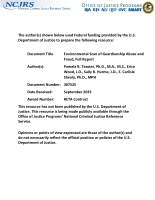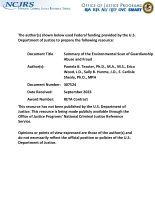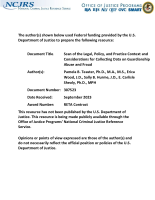Child sexual abuse images and youth produced images: The varieties of Image-based Sexual Exploitation and Abuse of Children
Journal
Date Published
2023
Agencies
NIJ-Sponsored
Publication Type
Research (Applied/Empirical)







